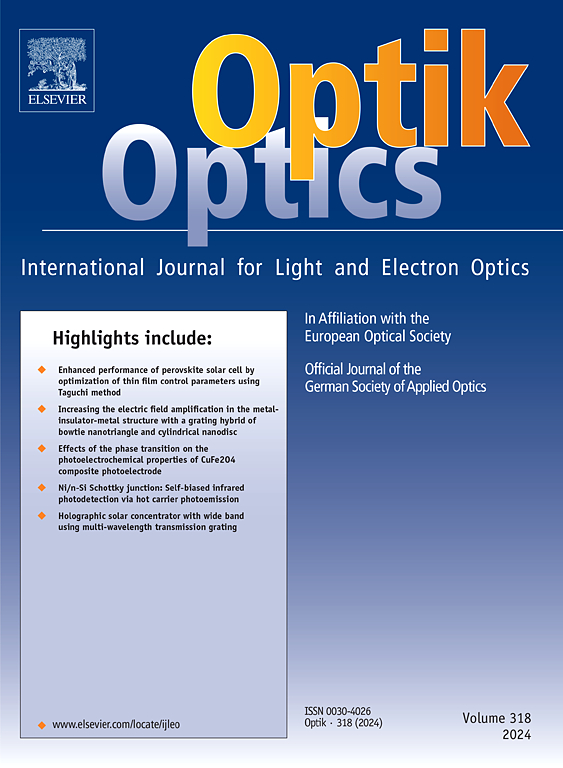Simulation of optical coherence tomography to determine refractive indices of retinal layers in different organisms
IF 3.1
3区 物理与天体物理
Q2 Engineering
引用次数: 0
Abstract
Optical coherence tomography (OCT) is a non-invasive imaging technique that generates two-dimensional (2D) images or three-dimensional (3D) representations of inhomogeneous biological tissues and is widely used in ophthalmology. This study simulates OCT interferograms to extract the refractive indices of retinal layers in humans, monkeys, cows, and dogs. Using a supergaussian light, the refractive indices of key retinal layers including the nerve fiber layer (NFL), inner plexiform and ganglion cell layers (IPL + GCL), inner nuclear layer (INL), outer plexiform layer (OPL), outer nuclear layer and photoreceptor inner segments (ONL + PIS), and photoreceptor outer segments (POS)—are calculated based on predefined layer thicknesses. The simulation results showed that, for example, the refractive indices of the NFL are 1.376, 1.374, 1.380, and 1.355 for human, monkey, cow and dog, respectively. These values are validated by matching the peak positions in the OCT interferograms to the known physical thicknesses of each retinal layer. The proposed method provides a reliable approach for refractive index determination of samples where experimental data are limited.
光学相干断层成像的模拟,以确定在不同的生物体视网膜层的折射率
光学相干断层扫描(OCT)是一种非侵入性成像技术,可生成非均匀生物组织的二维(2D)图像或三维(3D)图像,广泛应用于眼科。本研究模拟OCT干涉图提取人类、猴子、奶牛和狗的视网膜层折射率。利用超高斯光,根据预定层厚度计算视网膜关键层的折射率,包括神经纤维层(NFL)、内丛状和神经节细胞层(IPL + GCL)、内核层(INL)、外丛状层(OPL)、外核层和光感受器内段(ONL + PIS)和光感受器外段(POS)。仿真结果表明,以人、猴、牛、狗为例,NFL的折射率分别为1.376、1.374、1.380、1.355。这些值通过将OCT干涉图中的峰值位置与每个视网膜层的已知物理厚度相匹配来验证。该方法为实验数据有限的样品折射率测定提供了一种可靠的方法。
本文章由计算机程序翻译,如有差异,请以英文原文为准。
求助全文
约1分钟内获得全文
求助全文
来源期刊

Optik
物理-光学
CiteScore
6.90
自引率
12.90%
发文量
1471
审稿时长
46 days
期刊介绍:
Optik publishes articles on all subjects related to light and electron optics and offers a survey on the state of research and technical development within the following fields:
Optics:
-Optics design, geometrical and beam optics, wave optics-
Optical and micro-optical components, diffractive optics, devices and systems-
Photoelectric and optoelectronic devices-
Optical properties of materials, nonlinear optics, wave propagation and transmission in homogeneous and inhomogeneous materials-
Information optics, image formation and processing, holographic techniques, microscopes and spectrometer techniques, and image analysis-
Optical testing and measuring techniques-
Optical communication and computing-
Physiological optics-
As well as other related topics.
 求助内容:
求助内容: 应助结果提醒方式:
应助结果提醒方式:


